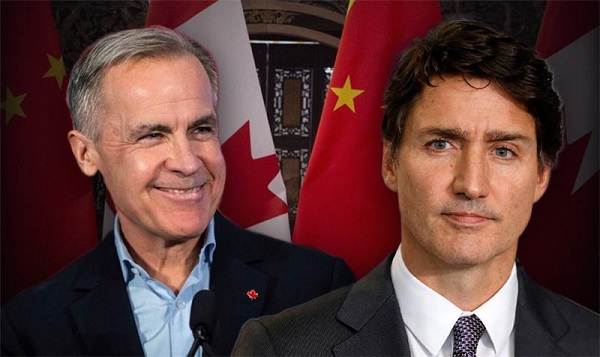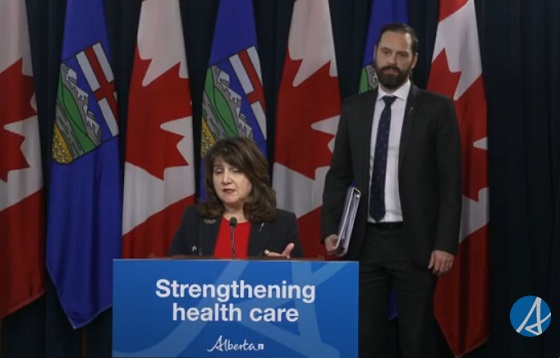Business
Government Subsidies and the Oil and Gas Industry
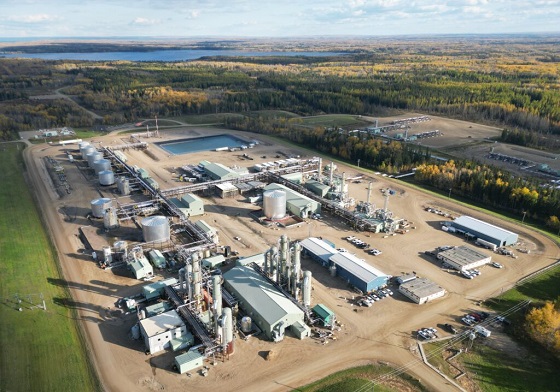
A look at Strathcona Resources Ltd.
Does the Canadian government subsidize companies operating in our oil and gas sector? According to research by science and technology journalist Emily Chung, between $4.5 billion and $81 billion of public funds are spent each year for assistance to the industry. But Chung notes how ambiguous definitions (what exactly is a subsidy?) mean that those numbers come with serious caveats.
I thought I’d make this discussion a bit more manageable by focusing on just one industry player: Strathcona Resources Ltd.
Strathcona is big. They produce around 185,000 barrels of oil equivalent each day and the company is currently ranked 98th among publicly traded companies in Canada in terms of market cap ($5 billion) and 88th for operating margin (21.59%).
The Audit does this work in part because paid subscribers share the load. Why not join, too?
What Is a Subsidy?
In the context of their report on the fossil fuel industry, the Department of Finance Canada asserts that “subsidies” can include:
- tax expenditures,
- grants and contributions,
- government loans or loan guarantees at favourable rates,
- resources sold by government at below-market rates
- research and development funding
- government intervention in markets to lower prices
The report defines tax expenditures as:
A type of tax measure, such as a preferential tax rate, exemption, deduction, deferral, or credit, with which the government aims to achieve public policy objectives through the tax system.
In the specific context of Strathcona, I could find no evidence that they’d received any direct public funding or “bailouts”. The government did recently announce a billion dollar partnership with the Canada Growth Fund (CGF) to build carbon capture and sequestration infrastructure, but that’s clearly an investment and not a subsidy. CGF is a Canadian arm’s-length crown corporation whose investments are managed by the Public Sector Pension Investment Board.
Strathcona’s 2023 Annual Report includes a reference to only one loan liability, but that had already been paid off and, in any case, wasn’t guaranteed by any level of government.
What Tax Benefits Does Strathcona Receive?
Many. The company’s annual report discusses its $6.1 billion “tax pool”. The pool is made up of deductions and credits that it can’t use this year, but that can be deferred for use in future years. Here’s how those break down:
The “Other Tax Deductions” item includes the Scientific Research and Experimental Development (SRED) deduction. That represents amounts spent on SRED-eligible research that companies can deduct from their payable taxes.
What Grant Funding Does Strathcona Receive?
Open Government data reports that only two federal grants were awarded to Strathcona, both in 2023. The first, worth $3.2 million, came from Natural Resources Canada as part of their Energy Innovation Program. Its purpose was development of Lindbergh Semi-Closed Cycle Flue Gas Recirculation and Carbon Capture.
The second grant was worth $12.5 million. It involved Environment and Climate Change Canada looking for an Orion Organic Rankine Cycle Waste Heat Recovery and Power Generation Project.
What Benefits Do Governments Receive From Strathcona?
Government subsidies don’t exist in a vacuum. As a rule, it’s assumed that subsidies to the private sector work as an investment whose primary payback is in profitable economic activity. Governments can also enjoy direct benefits.
In 2023, for example, Strathcona paid more than $405 million in crown royalties to provincial governments. They also spent $2.4 billion as operating expenses that included labor, energy costs, transportation, processing, and facility maintenance. Most of that money was spent in Canada.
A very rough estimate would suggest that total annual personal income taxes generated by people employed by Strathcona would be somewhere around $14 million. Vendors might pay another $13 million in corporate taxes.
There are also indirect benefits. For instance, those with jobs around the oil patch are, obviously, not unemployed and receiving EI benefits.
We could also take into account the larger impact Strathcona has on the general economy. Think about the food, shelter, clothing, and entertainment spending done by the families of Strathcona (and their vendors’) employees. That money, too, performs important social and economic service.
So does Strathcona receive more from government subsidies than the money they feed back into government accounts? Well, the $405 million in crown royalties are likely annual payments, as are the $27 million paid as income taxes. That’s what governments get. On the other side of the balance sheet, there is the $6.1 billion in deferred taxes and $16 million in grants. Those will probably be amortized over multiple years.
But does the word “subsidy” really describe tax benefits in any useful way? After all, there’s no company in all Canada – my own company included – that doesn’t deduct legitimate business expenses. And each and every Canadian receives similar benefits whenever they file their T1. For illustration, a Canadian whose total income happened to match the national average ($55,600) pays around $5,600 less in taxes each year due to various deductions and credits – including the basic personal amount.
Does that mean we’re all receiving government subsidies? There’s nothing wrong with thinking about it that way, but it does kind of strip the word of any real meaning.
Now you could reasonably argue that $6 billion is an awful lot of deferred tax, especially for a company with a 22% operating margin. And you could look to the tax code’s complexity for answers as to how this could have happened. But that’s not a subsidy in any coherent sense.
Think the tax code should be reformed? The line forms right behind me. However, the problem with playing around with the tax code is that changes apply to everyone, not just Strathcona or some other preferred target. Successfully anticipating how that might play out in dark and unanticipated ways isn’t the kind of thing for which governments are famous.
The Audit does this work in part because paid subscribers share the load. Why not join, too?
Business
Canadians love Nordic-style social programs as long as someone else pays for them

This article supplied by Troy Media.
 By Pat Murphy
By Pat Murphy
Generous social programs come with trade-offs. Pretending otherwise is political fiction
Nordic societies fund their own benefits through taxes and cost-sharing. Canadians expect someone to foot the bill
Like Donald Trump, one of my favourite words starts with the letter “T.” But where Trump likes the word “tariff,” my choice is “trade-off.” Virtually everything in life is a trade-off, and we’d all be much better off if we instinctively understood that.
Think about it.
If you yield to the immediate pleasure of spending all your money on whatever catches your fancy, you’ll wind up broke. If you regularly enjoy drinking to excess, be prepared to pay the unpleasant price of hangovers and maybe worse. If you don’t bother to acquire some marketable skill or credential, don’t be surprised if your employment prospects are limited. If you succumb to the allure of fooling around, you may well lose your marriage. And so on.
Failing to understand trade-offs also extends into political life. Take, for instance, the current fashion for anti-capitalist democratic socialism. Pushed to explain their vision, proponents will often make reference to the Nordic countries. But they exhibit little or no understanding of how these societies actually work.
As American economist Deirdre Nansen McCloskey notes, “Sweden is pretty much as ‘capitalistic’ as is the United States. If ‘socialism’ means government ownership of the means of production, which is the classic definition, Sweden never qualified.” The central planning/government ownership model isn’t the Swedish way.
What the Nordics do have, however, is a robust social safety net. And it’s useful to look at how they pay for it.
J.P. Morgan’s Michael Cembalest is a man who knows his way around data. He puts it this way: “Copy the Nordic model if you like, but understand that it entails a lot of capitalism and pro-business policies, a lot of taxation on middle-class spending and wages, minimal reliance on corporate taxation and plenty of co-pays and deductibles in its health care system.”
For instance, take the kind of taxes that are often derided as undesirably regressive—sales taxes, social security taxes and payroll taxes. In Sweden, they account for a whopping 27 per cent of gross domestic product. And some 15 per cent of health expenditures are out of pocket.
Charles Lane—formerly with the Washington Post, now with The Free Press—is another who pulls no punches: “Nordic countries are generous, but they are not stupid. They understand there is no such thing as ‘free’ health care, and that requiring patients to have at least some skin in the game, in the form of cost-sharing, helps contain costs.”
In effect, Nordic societies have made an internal bargain. Ordinary people are prepared to fork over large chunks of their own money in return for a comprehensive social safety net. They’re not expecting the good stuff to come to them without a personal cost.
Scandinavians obviously understand the concept of trade-offs, a dimension that seems to be absent from much of the North American discussion. Instead of Nordic-style pragmatism, spending ideas on this side of the Atlantic are floated on the premise of having someone else pay. And the electorally prized middle class is to be protected at all costs.
In the aftermath of Zohran Mamdami’s New York City win, journalist Kevin Williamson had a sobering reality check: “Class warfare isn’t how they roll in Scandinavia. Oslo is a terrific place to be a billionaire—Copenhagen and Stockholm, too … what’s radically different about the Scandinavians is not how they tax the very high-income but how they tax the middle.”
Taxation propensities aside, Nordic societies are different from the United States and Canada.
Denmark, for instance, is very much a “high-trust” society, defined as a place “where interpersonal trust is relatively high and ethical values are strongly shared.” It’s often been said that it works the way it does because it’s full of Danes, which is broadly true—albeit less so than it was 40 years ago.
Denmark, though, has no interest in multiculturalism as we’ve come to know it. Although governed from the centre-left, there’s no state-sponsored focus on systemic discrimination or diversity representation. Instead, the emphasis is on social cohesion and conformity. If you want to create a society like Denmark, it helps to understand the dynamics that make it work.
Reality intrudes on all sorts of other issues. For example, there’s the way in which public discourse is disfigured on the question of climate change and the need to pursue aggressive net-zero policies.
Asked in the abstract, people are generally favourable, which is then touted as evidence of strong public support. But when subsequently asked how much they’re personally prepared to pay to accomplish these ambitious goals, the answer is often little or nothing.
If there’s one maxim we should be taught from childhood, it’s this: there are no panaceas, only trade-offs.
Troy Media columnist Pat Murphy casts a history buff’s eye at the goings-on in our world. Never cynical – well, perhaps a little bit.
Troy Media empowers Canadian community news outlets by providing independent, insightful analysis and commentary. Our mission is to support local media in helping Canadians stay informed and engaged by delivering reliable content that strengthens community connections and deepens understanding across the country.
Alberta
Alberta can’t fix its deficits with oil money: Lennie Kaplan

This article supplied by Troy Media.
Alberta is banking on oil to erase rising deficits, but the province’s budget can’t hold without major fiscal changes
Alberta is heading for a fiscal cliff, and no amount of oil revenue will save it this time.
The province is facing ballooning deficits, rising debt and an addiction to resource revenues that rise and fall with global markets. As Budget 2026 consultations begin, the government is gambling on oil prices to balance the books again. That gamble is failing. Alberta is already staring down multibillion-dollar shortfalls.
I estimate the province will run deficits of $7.7 billion in 2025-26, $8.8 billion in 2026-27 and $7.5 billion in 2027-28. If nothing changes, debt will climb from $85.2 billion to $112.3 billion in just three years. That is an increase of more than $27 billion, and it is entirely avoidable.
These numbers come from my latest fiscal analysis, completed at the end of October. I used conservative assumptions: oil prices at US$62 to US$67 per barrel over the next three years. Expenses are expected to keep growing faster than inflation and population. I also requested Alberta’s five-year internal fiscal projections through access to information but Treasury Board and Finance refused to release them. Those forecasts exist, but Albertans have not been allowed to see them.
Alberta has been running structural deficits for years, even during boom times. That is because it spends more than it brings in, counting on oil royalties to fill the gap. No other province leans this hard on non-renewable resource revenue. It is volatile. It is risky. And it is getting worse.
That is what makes Premier Danielle Smith’s recent Financial Post column so striking. She effectively admitted that any path to a balanced budget depends on doubling Alberta’s oil production by 2035. That is not a plan. It is a fantasy. It relies on global markets, pipeline expansions and long-term forecasts that rarely hold. It puts taxpayers on the hook for a commodity cycle the province does not control.
I have long supported Alberta’s oil and gas industry. But I will call out any government that leans on inflated projections to justify bad fiscal choices.
Just three years ago, Alberta needed oil at US$70 to balance the budget. Now it needs US$74 in 2025-26, US$76.35 in 2026-27 and US$77.50 in 2027-28. That bar keeps rising. A single US$1 drop in the oil price will soon cost Alberta $750 million a year. By the end of the decade, that figure could reach $1 billion. That is not a cushion. It is a cliff edge.
Even if the government had pulled in $13 billion per year in oil revenue over the last four years, it still would have run deficits. The real problem is spending. Since 2021, operating spending, excluding COVID-19 relief, has jumped by $15.5 billion, or 31 per cent. That is nearly eight per cent per year. For comparison, during the last four years under premiers Ed Stelmach and Alison Redford, spending went up 6.9 per cent annually.
This is not a revenue problem. It is a spending problem, papered over with oil booms. Pretending Alberta can keep expanding health care, education and social services on the back of unpredictable oil money is reckless. Do we really want our schools and hospitals held hostage to oil prices and OPEC?
The solution was laid out decades ago. Oil royalties should be saved off the top, not dumped into general revenue. That is what Premier Peter Lougheed understood when he created the Alberta Heritage Savings Trust Fund in 1976. It is what Premier Ralph Klein did when he cut spending and paid down debt in the 1990s. Alberta used to treat oil as a bonus. Now it treats it as a crutch.
With debt climbing and deficits baked in, Alberta is out of time. I have previously laid out detailed solutions. But here is where the government should start.
First, transparency. Albertans deserve a full three-year fiscal update by the end of November. That includes real numbers on revenue, expenses, debt and deficits. The government must also reinstate the legal requirement for a mid-year economic and fiscal report. No more hiding the ball.
Second, a real plan. Not projections based on hope, but a balanced three-year budget that can survive oil prices dropping below forecast. That plan should be part of Budget 2026 consultations.
Third, long-term discipline. Alberta needs a fiscal sustainability framework, backed by a public long-term report released before year-end.
Because if this government will not take responsibility, the next oil shock will.
Lennie Kaplan is a former senior manager in the fiscal and economic policy division of Alberta’s Ministry of Treasury Board and Finance, where, among other duties, he examined best practices in fiscal frameworks, program reviews and savings strategies for non-renewable resource revenues. In 2012, he won a Corporate Values Award in TB&F for his work on Alberta’s fiscal framework review. In 2019, Mr. Kaplan served as executive director to the MacKinnon Panel on Alberta’s finances—a government-appointed panel tasked with reviewing Alberta’s spending and recommending reforms.
-

 Alberta21 hours ago
Alberta21 hours agoFrom Underdog to Top Broodmare
-

 International2 days ago
International2 days agoAfghan Ex–CIA Partner Accused in D.C. National Guard Ambush
-
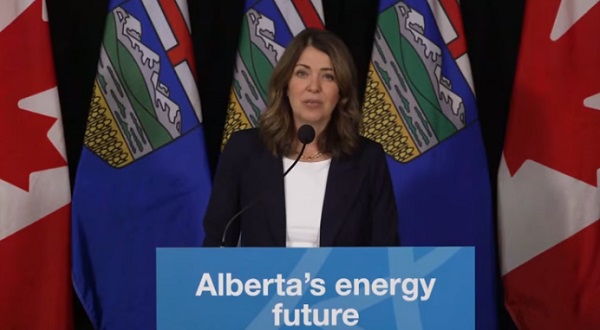
 Alberta2 days ago
Alberta2 days agoAlberta and Ottawa ink landmark energy agreement
-

 Energy2 days ago
Energy2 days agoPoilievre says West Coast Pipeline MOU is no guarantee
-
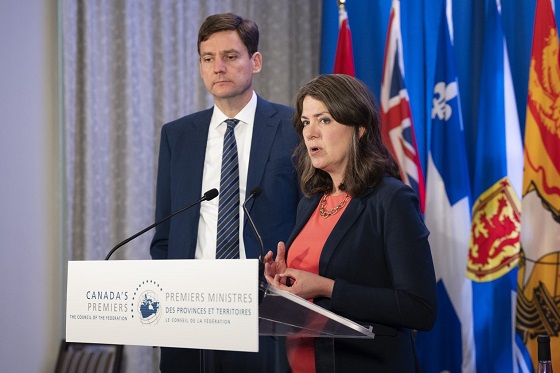
 Alberta2 days ago
Alberta2 days agoWest Coast Pipeline MOU: A good first step, but project dead on arrival without Eby’s assent
-
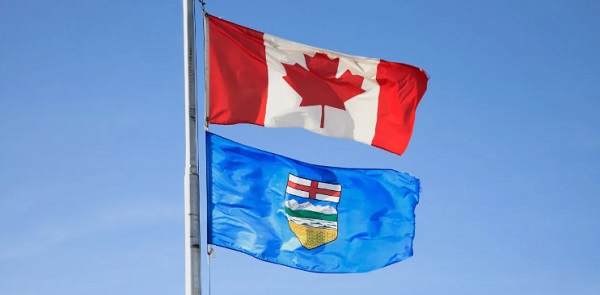
 Alberta2 days ago
Alberta2 days agoCarney forces Alberta to pay a steep price for the West Coast Pipeline MOU
-

 Carbon Tax2 days ago
Carbon Tax2 days agoCanadian energy policies undermine a century of North American integration
-

 Business23 hours ago
Business23 hours agoHigher carbon taxes in pipeline MOU are a bad deal for taxpayers










